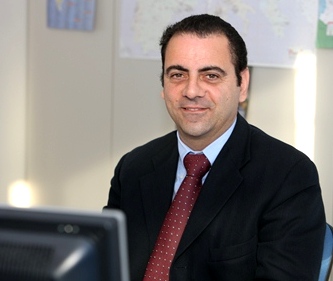Energy is Critical Key to Asia’s Tissue Future
 Print this article | Send to Colleague Print this article | Send to Colleague
 Tissue machine startups are coming thick and fast from Asia, reports Toscotec’s (Italy) Far East GM Marco Dalle Piagge (photo on the right). China alone accounted for more than half of the new lines in 2010/11, he notes. "At Toscotec, we have sold more than 20 machines in the region during the past two years, and upwards of 35 Steel Yankee Dryers, and we are of course not alone in experiencing a high level of activity in the Far East," Piagge says. The question is, he emphasizes, "is this sustainable? To answer, we need to see the distinct differences that exist within Asia." Tissue machine startups are coming thick and fast from Asia, reports Toscotec’s (Italy) Far East GM Marco Dalle Piagge (photo on the right). China alone accounted for more than half of the new lines in 2010/11, he notes. "At Toscotec, we have sold more than 20 machines in the region during the past two years, and upwards of 35 Steel Yankee Dryers, and we are of course not alone in experiencing a high level of activity in the Far East," Piagge says. The question is, he emphasizes, "is this sustainable? To answer, we need to see the distinct differences that exist within Asia."
With the huge amount of new capacity in China, much of it still in the pipeline, "we will probably see a period where capacity outstrips demand – perhaps for a year. Strategically, however, the investments still hold their own, because demand growth will remain strong for the foreseeable future, and the main players need to secure market share through product innovation and productivity, both of which are best served with the latest technology," Piagge continues.
More concerning are South Korea and Japan, he points out, where there is evidence of lower demand growth. "In such a competitive situation, the need to be innovative and efficient is particularly pressing."
South East Asia, on the other hand, appears to be in an expansion phase, with newcomers appearing on the scene, attracted by this dynamic area’s prospects as it rediscovers some of the momentum that drove such extraordinary economic progress in the early 1990s. India is another one to watch, particularly as the era of second- or even third-hand machines is coming to an end, as producers seek more modern technology to meet the needs of a more sophisticated, demanding market, Piagge explains.
The challenge that unites all parts of Asia is the cost and supply of energy. Gas is not on tap throughout China. Guangdong, for example, has virtually none. Most tissue machines in the 30 to 50 tpd category in China rely on coal to generate steam. With coal instead of gas, production speeds close to 1,700 meters/min rather than 2,000 meters/min are realistic. "At Toscotec we believe, however, that with world-class runnability, this can still put a mill in a strong position, by significantly reducing production costs. Our message is that with the right technology, (we would of course advocate our energy-saving steel yankee), you can still be competitive with coal," Piagge says.
Shortage of gas is mainly a Chinese problem, according to Piagge, but the high and rising cost of energy affects producers throughout Asia. The priority is therefore to reduce energy use to a minimum, and this should be the focus of investments for the foreseeable future, rather than out-and-out capacity, he adds.
   
|
|

